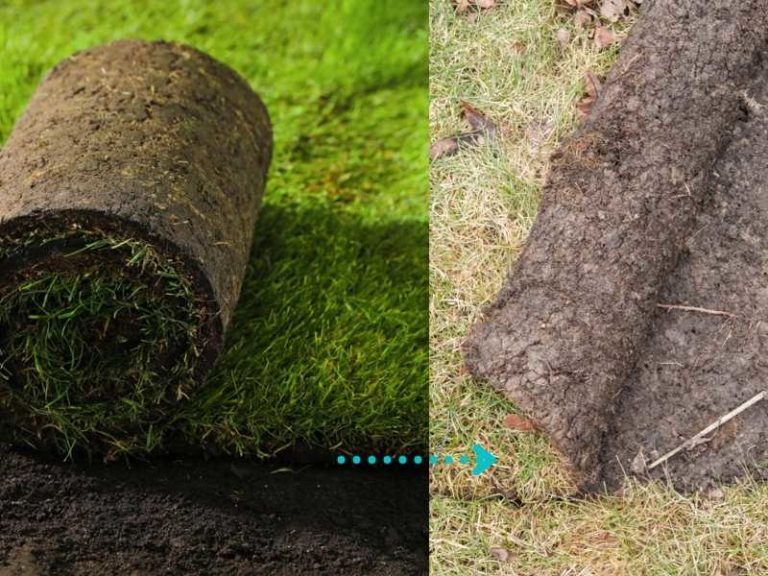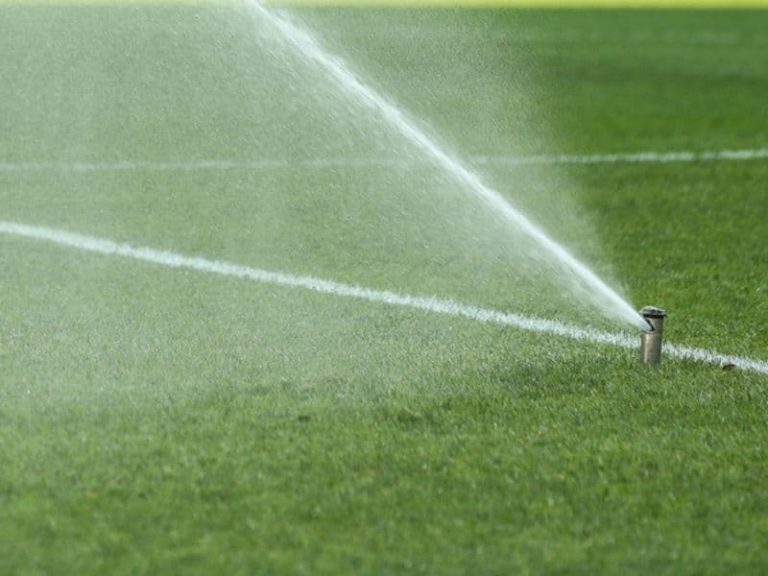How to Make a Lawn Roller
Rolling uneven bumps on the lawn makes the surface uniform. It’s still a controversial topic between homeowners and lawn professionals. Still, it’s a common practice in many homes. Currently, you can rent a lawn roller, buy a commercial one or go DIY.
Get a steel barrel, hollow metal pipes, and long metal bars. Set the hollow metal pipe in the middle of your steel barrel, pour in concrete, and lay the barrel on the ground. Attach steel bars on each end of the exposed PVC pipe and voila! Permanent DIY homemade lawn roller.
Here are some ways to create your lawn roller and save on renting costs.
Is it good to roll your lawn?
The choice to roll your lawn is personal. As a lawn care practice, it’s a divided opinion. Most professional landscapers will tell you that rolling your lawn is unnecessary and damaging to your lawn’s health. However, it achieves the desired results if you want graded grounds and full seed-to-ground contact.
Lawn rolling is done in commercial sites like golf courses, athletics fields, and decorative properties to level surfaces and make them comfortable. A regular home lawn doesn’t need rolling except when sodding or seeding and when the bumps make mowing and watering difficult.
Passing a light lawn roller is recommended when installing sods to make the sods contact the soil closely and firmly. Overseeding spots on lawns also require light rolling to bind the seeds to the ground so they can germinate and develop extensive roots.
Lawn rolling when sodding or seeding must always be followed by aerating after the seeds germinate to create air spaces for free air circulation and water passage.
Uneven spots make the lawn unattractive. Lumps are common in spring due to the frost’s heavy damage in winter. Cold winter temperatures freeze water in the soil, expanding the ground and causing lumps. However, the ice bumps naturally thaw in spring’s warmer temperatures.
More problems arise when low spots collect standing water while the higher areas dry out, affecting lawn health.
Bumps make mowing and watering difficult. Mowing controls the grass length, ensuring they grow at the same rate. But when the lawn is bumpy, the grass is unevenly cut, affecting their uniform height. Furthermore, the mower becomes challenging to move around the bumps in the yard. When mowing and watering prove challenging to conduct because of the lumps and bumps, lawn rolling is necessary to even them and improve the lawn’s health.
But lawn experts discourage lawn rolling because it leads to soil compaction, which affects the health of the grass. Conducive soils for growing grasses should have enough air, water, and nutrients to support the turf’s development.
Healthy soil has 25 percent air and 25 percent water to encourage the plants’ growth and enable microorganisms to break the organic matter to provide nutrients to the ground. Lawn rolling with heavy rollers closes the pores between the soil particles, compacting the soil. Compact soils impede the passage of water and nutrients vital to support grass growth. Therefore, the lawn’s health deteriorates.
How to make a DIY lawn roller
DIY lawn rollers are easy and cheap to make. The materials required are readily available around your home. You can create a lawn roller from a 55-gallon drum, cardboard drum, old water heater, and concrete.
Use a 55-gallon drum.
A 55-gallon drum is the most popular DIY lawn roller. You can get such drums from a gas station. Fill the drum with sand or water to regulate its weight when rolling the lawn.
The drum is filled with water or sand to make it heavy enough for leveling commercial grounds. However, when overseeding or installing sod, the drum is a third filled with water or sand. Aerating is recommended after the seeds germinate to encourage healthy turf growth.
Here’s how to make a lawn roller from a 55-gallon drum.
- Drill a 1-inch wide hole at the center of the lid and at the bottom of the drum.
- Pass a 1-inch metal pipe through the holes.
- Attach a metal handlebar on both ends of the metal pipe.
- Use the lid’s opening to add water or sand to the drum.
Use a cardboard drum.
A cardboard lawn roller is more effective than a 55-gallon drum. The cardboard drum has no ridges on its surfaces and levels the ground evenly. The cardboard material is lightweight and does not compact the soil like a gallon drum.
To make a cardboard lawn roller, you will need a metal pipe, a handle, and a cardboard drum.
Here’s how to create the roller using these tools:
- Drills two holes about 1.5 inches wide at the ends of the cardboard drum. Make the holes precisely at the center so the roller runs smoothly when in use.
- Pass the metal pipe from one end of the hole to the other end.
- Attach a handle to the metal pipe, and the lawn roller is ready to use.
Use concrete
Concrete is cheap and readily available to make a lawn roller. However, concrete lawn rollers can cause soil compaction. Since the roller is solid, it leaves no room for adjustments to control its weight once constructed. Although it does the job pretty well in golf courses, a concrete roller is not recommended for home lawns. You will need sand, cement, water, and a barrel to create a concrete lawn roller.
Here’s how to make a lawn roller using concrete:
- Pass a 1-inch pipe through the barrel.
- Mix two parts of sand with one part of cement, add water and stir the two to form concrete.
- Pour the concrete into the barrel without removing the metal pipe at the center. Let it dry.
- Attach a handlebar at the ends of the metal pipe.
Using an old water heater
An old water heater can create a good lawn roller. However, water heaters are metallic and thus need a lot of metalwork. You can make an excellent DIY lawn roller from your old water heater if you are handy with metals. You will need a 60-gallon water heater, a drill, a pillow bar arm, a pillow block bearing, and sizable steel. Here’s how to make a lawn roller from an old water heater
- Make a hole at the center of the tank and fix a drill at both ends
- Place the pillow block bearing at the ends of the drills
- Fix sizable steel vertically at the ends of the bearing
- Fix a pillow block arm to the ends of the bearing.
- Measure sizable steel and attach them to the blocking arm to form the handle of the water tank roller
- Drill holes at the end of the steel handlebar to make it easier to attach to a tractor
2 best lawn rollers
While it’s easy to create homemade lawn rollers, you can lack the materials needed. Commercial lawn rollers are available in online stores and are better than homemade rollers. We have handpicked the best two lawn rollers you can choose to do the job.
Brinly PRC-241BH 270lb. Push/Tow Poly Lawn Roller
Brinly push or tow poly lawn roller is the best roller because of its versatility and durability. The lawn roller has a maximum capacity of 28 gallons. It can also hold up to 270 lbs of water or sand. It’s lightweight, easier to push, and does not compact the soil.
The roller is flexible as you can push or pull it to navigate tight areas or large open spaces. Its rounded ends don’t damage the lawn when you turn. The roller is rust-resistant and weatherproof, increasing the tool’s lifespan.
The Brinly lawn roller has an opening with a large diameter that makes it easier to fill in or empty the roller with sand or water. The roller’s lightweight makes it easy to store when you’re done.
Brinly push/tow poly lawn roller pros
- Easy to store once you’re done
- Durable material
- It doesn’t damage the lawn
- Versatile
- Easy to fill using a garden hose.
Brinly push/tow poly lawn roller cons
- Challenging assembly, especially for a new user.
Goplus tow behind lawn roller
Goplus tow behind lawn roller has three useful features that make it the second-best lawn roller on our list. It comes in a convenient size; it’s comfortable to push and compact enough for small areas. Additionally, the small size of the roller makes it easy to store and transport.
Goplus has a U-shaped handle that makes it comfortable to push and pull by hand. Goplus lawn roller is easy to navigate in tight areas and large open spaces. The lawn roller is easy to detach and assemble.
It’s made from steel, and its surface is sprayed to resist rust and weather damage. Its edges are rounded to avoid damaging your lawn when turning. Goplus lawn roller has a drainage plug for water addition and emptying.
Goplus tow behind lawn roller pros
- Rust resistant
- Comfortable to use
- Small enough for compact spaces
- It can take 17.62 US gallons of dry sand weighing 239.88 lbs.
- Easy storage
Goplus tow behind lawn roller cons
- Less effective if filled with sand
- unsuitable for a sturdier job
When should I roll my lawn?
Rolling the lawn should be done in spring. At this time, the grasses are from winter dormancy and recover fast from the rolling stress. The lawn soil should be damp but not overly wet or sogged. Rolling an extremely wet soil compacts the ground further, leading to grass suffocation.
Rolling should not be done in summer or winter because the hard ground makes the activity difficult.
Reference
Michigan State University: Spring lawn care tips for the do-it-yourselfers.

![Ariens Riding Mower Transmission Problems [Troubleshooting + Fixes]](https://lawnmodel.com/wp-content/uploads/2022/05/Ariens-RidingMower-Transmission-Problems-768x576.jpg)



